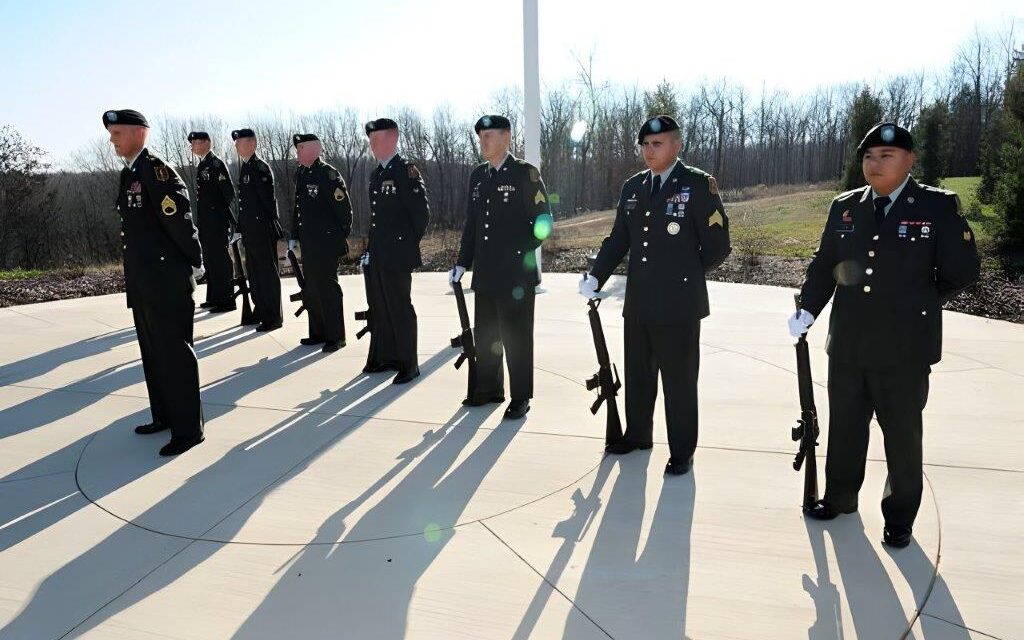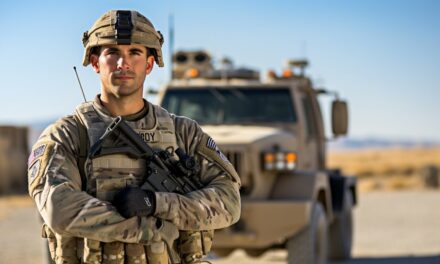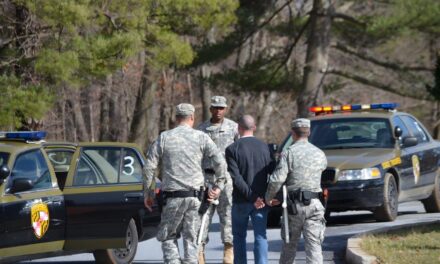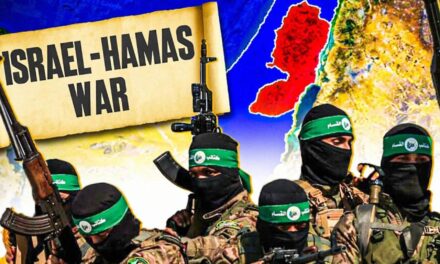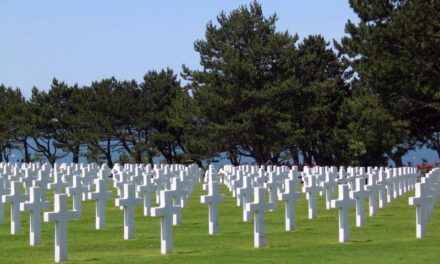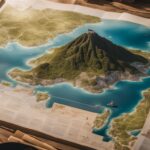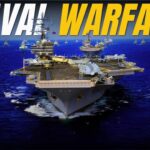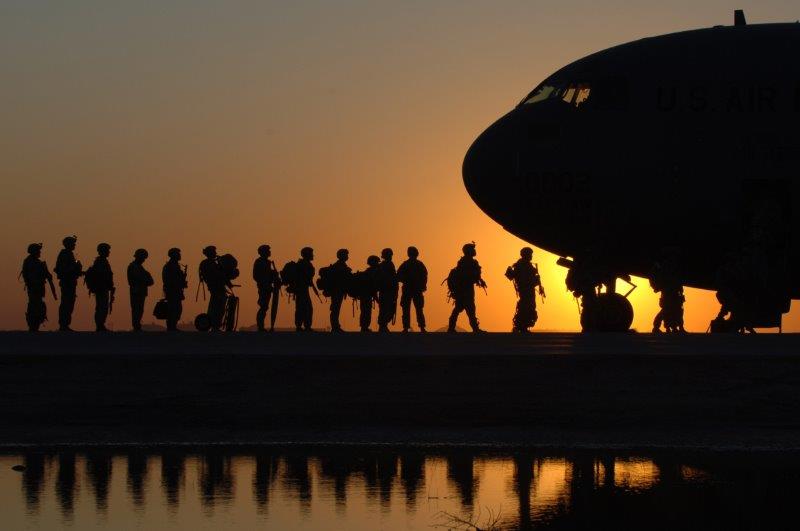Officers in the military police are a crucial part of the armed forces defense. They are in charge of upholding order, upholding the law, and safeguarding military troops. In order to differentiate, symbolize, and sustain the authority of military police officers, military police uniforms are an important component. The history, varieties, equipment, and requirements of military police uniforms across the various branches of the armed forces will all be covered in this extensive look.
Key Takeaways:
- In order to identify and represent military police officers, uniforms are crucial.
- Military police officers are in charge of upholding order, upholding the law, and safeguarding military personnel.
- The history, varieties, equipment, and requirements of military police uniforms across the many branches of the armed forces will all be covered in this article.
Military Police Uniforms throughout History
The history of military police uniforms goes all the way back to the time of the Roman Empire. The Praetorian Guard, established by Emperor Augustus in 27 BC, was the first military police unit to be mentioned in history. The Vigiles, the military police of ancient Rome, were in charge of keeping the peace, looking into crimes, and protecting the city from fires. The tunic, helmet, and leather boots that the Vigiles wore were all part of their distinguishing outfit.
The Army Military Police Corps was founded in the US in 1941. These soldiers' first gear included khaki shirt and pants, a M1923 cartridge belt, and a garrison cap. The military police uniform has undergone major changes over time to reflect the changing nature of their job.
Military Branches that Have a Military Police Corps
All branches of the American military, including the Army, Navy, Air Force, Marine Corps, and Coast Guard, now have their own military police forces. Each branch has a unique dress, symbol, and set of rules. Military police officers in the Army, for instance, have a brassard on their left arm that says "Military Police" in capital letters.
| Branch of the Military | Distinctive Features of Military Police Uniforms |
|---|---|
| Army | Brassard with "Military Police" written in bold letters |
| Marine Corps | Red armband with "Military Police" in gold letters |
| Coast Guard | Blue beret with a "Coast Guard" emblem |
Over time, the military police's role has also changed. Military police officers today are in charge of upholding law and order, conducting criminal investigations, and supporting other military branches with security and law enforcement. As part of the Criminal Investigation Division (CID), they may also carry out specific tasks like managing hazardous devices, supporting military working dogs, and conducting criminal investigations.
"From the very beginnings of the Army, there have been men assigned to enforce discipline and keep order among the ranks. Today, we continue that proud tradition, supporting our soldiers and ensuring that our army operates with the highest levels of discipline and professionalism." - Chief of Staff of the United States Army
Military Police Uniform Types
Depending on the circumstance and context of their tasks, military police personnel may wear a variety of uniforms. Dress uniforms are worn for formal occasions and special events, whereas combat uniforms are worn for in-the-field and operational tasks.
Dress uniforms are intended to provide military police troops a polished and professional appearance. They frequently have distinctive features, such as a white top cover for the United States, and adhere to tight requirements, such as the placement of insignia and decorations. Black berets are worn by the Marine Corps Military Police or the Army Military Police Corps.
Dress uniforms are also a way for military police troops to show their pride in their service and their commitment to their country.
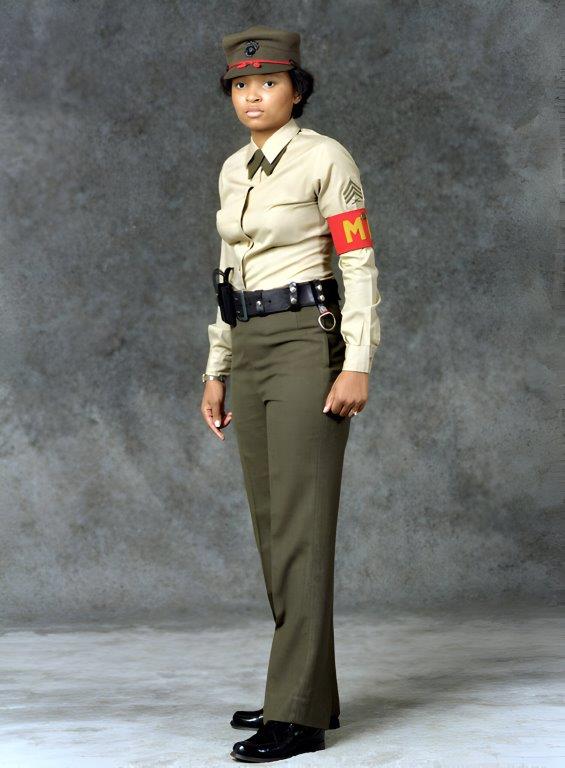
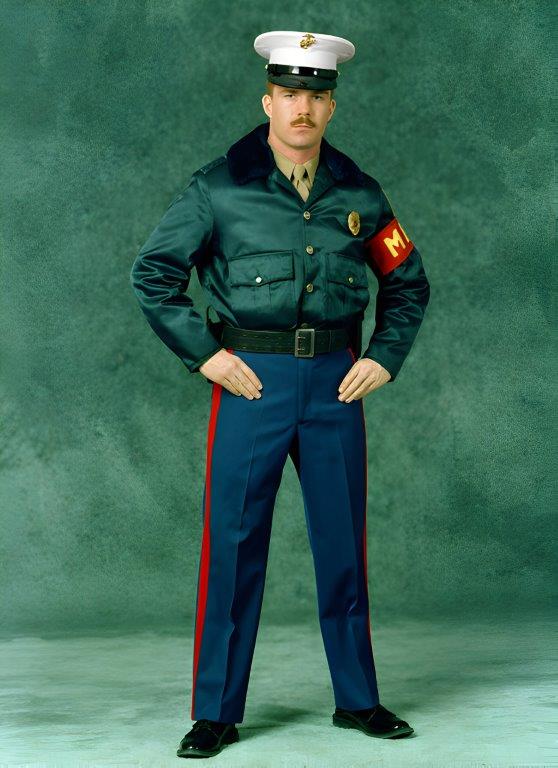
Combat gear is made with practicality and functionality in mind. They are frequently constructed from sturdy materials and include camouflage patterns to offer cover during missions. In order to distinguish themselves as military police, military police frequently don the same combat uniform as other troops in their unit.
The operational environment entails careful selection of the camouflage patterns employed in military police uniforms. For instance, US Army military police may dress in the Woodland Camouflage Pattern in forested or jungle settings or the Operational Camouflage Pattern (OCP) in desert or dry settings.
Gear & Equipment for Military Police
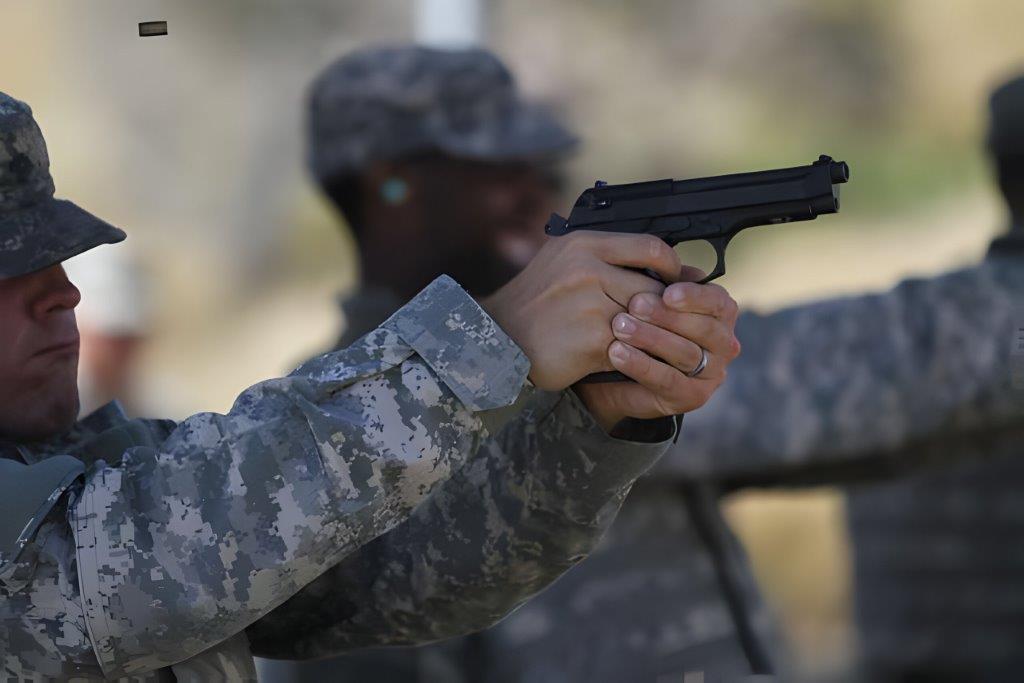
In order to do their tasks, military police personnel are equipped with a variety of tools and gear. This covers weapons, batons, handcuffs, radios, and safety equipment.
A firearm is a crucial component of gear for military police officers. For protection, they are allowed to carry a handgun and occasionally a rifle. They also have handcuffs and batons to restrain and detain offenders. They can communicate with other cops and headquarters using their radios.
The protective gear worn by military police officers also includes helmets, gloves, and bulletproof vests. They require this equipment to safeguard themselves in potentially hazardous situations.
In dangerous circumstances, military police may also make use of specialized tools like machine guns. They can utilize these weapons to reduce opposing forces, provide cover fire, and defend themselves and those around them.
Military Police Equipment & Gear Table:
| Equipment | Purpose |
|---|---|
| Firearms (handguns and rifles) | Protection |
| Batons and handcuffs | Detention and subduing suspects |
| Radios | Communication |
| Protective gear (bulletproof vests, helmets, gloves) | Protection in dangerous situations |
| Specialized equipment (machine guns) | High-risk situations |
Military police's role in law enforcement
Within the military, military police officers are essential for upholding law and order. Military police are soldiers who are tasked for enforcing the military's code of conduct and other rules and regulations on behalf of all service members.
Military police perform criminal investigations in addition to their general responsibilities and help other components of the armed forces. To look into crimes that take place on military bases and other installations, they collaborate closely with the criminal investigation division (CID) and other law enforcement organizations.
A senior US Army commander known as the Provost Marshal General is in charge of the military police force and makes sure that all soldiers have the tools they need to perform their jobs well. Since the American Revolutionary War, there has been a permanent division of the military known as the military police corps.
Responsibilities of Military Police
The military police are in charge of upholding law and order, stopping crimes, and ensuring the protection and safety of every member of the military. They carry out a variety of tasks, which may change depending on their location, unit, or particular mission. Among these responsibilities are:
- Patrolling military buildings and installations
- Applying military rules and regulations
- Taking people into custody who are thought to be breaking the law or military regulations
- Looking into criminal activity
- Ensuring the safety of military facilities and convoys
- Aiding in disaster relief initiatives
Officers of the military police are also tasked with supporting combat forces. In order to offer protection or aid in the capture of prisoners of war, they might accompany soldiers on operations. To gather information and conduct missions, they collaborate closely with various groups, including military intelligence and Special Forces.
The Military Uniform for Police in Different Branches
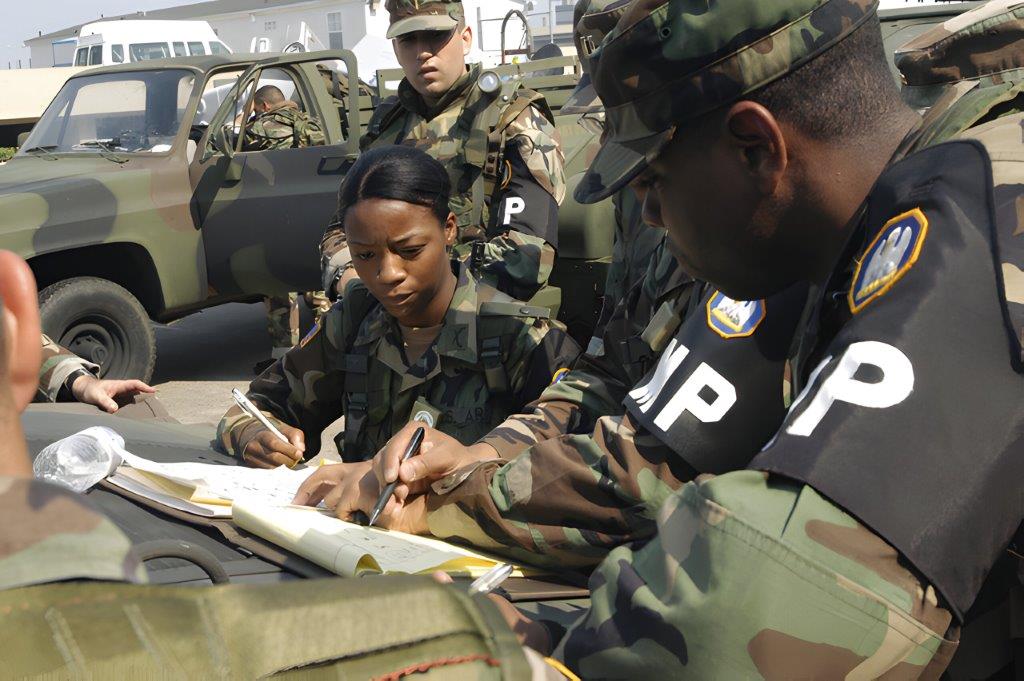
Various military branches have distinct outfits for their military police. An MP brassard worn on the upper left sleeve and a regimental coat of arms worn on the beret are two distinguishing symbols used by Army Military Police. The Marine Corps Military Police don the same camouflage uniform as the rest of the Marine Corps, but with special badges and insignia. The Operational Dress Uniform (ODU) worn by the Coast Guard is the uniform worn by Coast Guard Military Police, featuring "Coast Guard Police" patches on the chest and sleeves.
A white jacket and black pants are among the Army Military Police's designated dress uniforms for formal events. For formal events, they may also dress in a blue Mess uniform with gold braid on the sleeves and a white waistcoat. Military police officers, however, don the same combat gear as normal soldiers while engaged in combat, including helmets and body armor.
Training and Qualifications for Military Police
Military police officers must complete specialized training and meet certain requirements. The United States Armed Forces have a strict training program that equips recruits for the particular difficulties that military police personnel must overcome.
One must first complete basic training before enrolling in Military Police School in order to become a military police officer. The elements of military law and the concepts of law enforcement as they relate to the military are taught in this institution. This institution grants its graduates the Military Occupational Specialty (MOS) 31B.
Did You Know: Depending on their professional objectives and the requirements of their unit, personnel may enroll in specialized training programs after graduating from Military Police School. For instance, the 101st Airborne Division provides its soldiers with a unique military police training course.
Military police officers must also complete requirements for physical fitness, firearm proficiency, and security clearance in addition to this training. They go through routine evaluations to make sure they are living up to these standards and are equipped to handle any circumstance that may arise.
Uniforms for Military Police: Symbolism and Traditions
Military police uniforms have a long history and are filled with meaning. The coat of arms and regimental insignia, as well as every other component of the uniform, including the crossed pistols, convey information about the history and accomplishments of the wearing unit.
Military police uniforms prominently display a coat of arms. The symbols for courage, honor, and dedication are often an eagle, a shield, and a star. The star and shield signify the military police's duty to guard and serve, and the eagle denotes the United States.
Each military police unit is represented by its own distinguishing symbols known as regimental insignia or distinctive unit insignia. These emblems, which are frequently worn on the collar or lapel, provide soldiers a sense of pride and individuality. Swords, shields, and weapons are frequently included in the emblem to represent the unit's history and objective.
Military police personnel also don armbands with the letters "MP" in capital letters on them. The armband acts as a visible cue that the wearer belongs to the military police and is a representation of power and accountability.
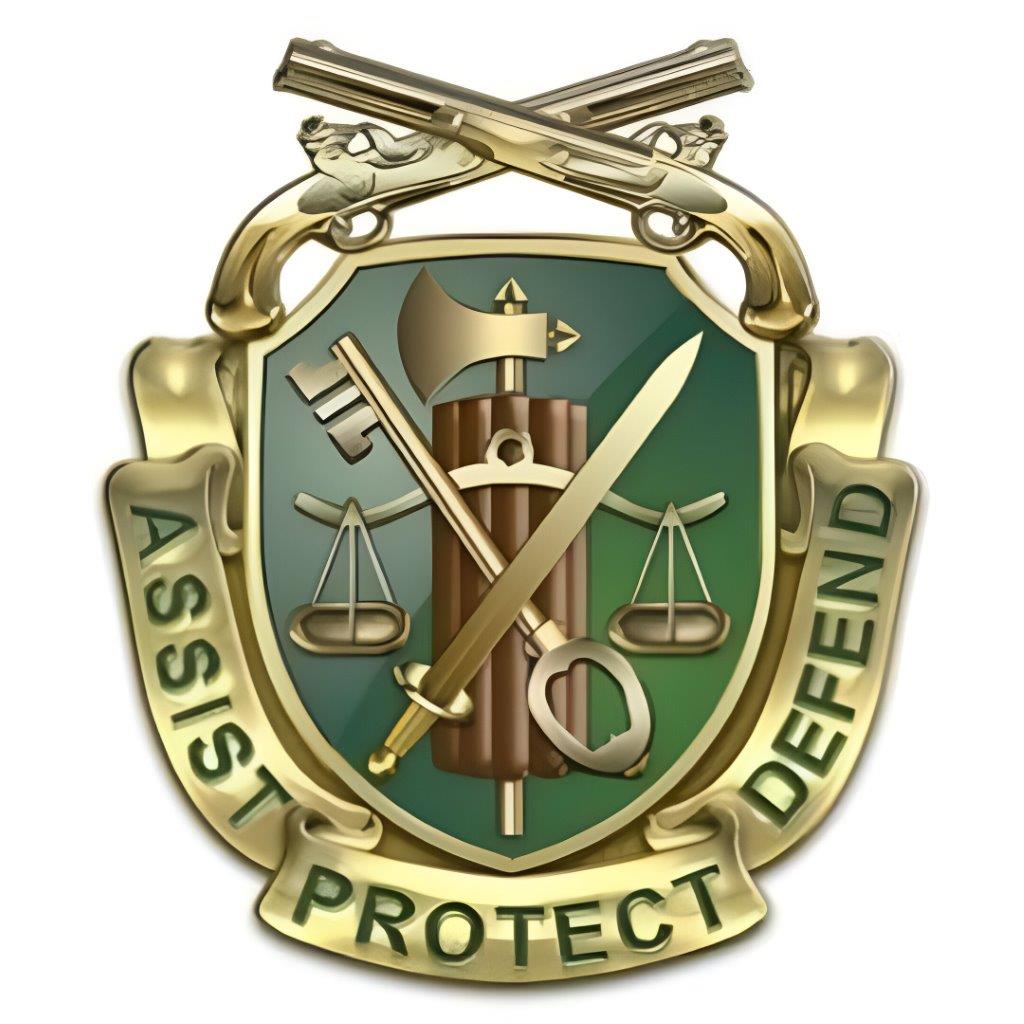
There are a few customs that are still followed by military police veterans. One such custom is the Military Police Regimental Walk, which commemorates the sacrifices made by military police personnel each year. Additionally, a military police song is played during official ceremonies and events.
Current Trends and Future Developments in Military Police Uniforms
The basic outfits worn in the past have been replaced by far more sophisticated garb for military police. Military police personnel have been seen in 2021 and 2023 wearing cutting-edge and tactical gear, signaling a change in the uniform's style and functionality. The modern materials and technologies available to military police units can improve both their performance and safety.
Military police in ceremonial attire, including peaked caps, white gloves, and polished shoes, stand guard during daytime military parades. The military police play a key part in ensuring security and upholding order in the armed services, which is reflected in their distinctive uniforms.
Did You Know: The introduction of gender-neutral uniforms: In recent years, there has been a growing trend towards gender-neutral uniforms in the military. This is due to the fact that more women are serving in the military, and they deserve to have uniforms that fit their bodies and allow them to move freely. Gender-neutral uniforms are also more inclusive, and they can help to break down gender stereotypes.
Technology developments have also influenced the design of military police uniforms. Some military police uniforms have been designed with specialized textiles with moisture-wicking characteristics, ballistic plates, and flame-resistant materials, improving functionality and safety in high-risk circumstances.
Police Stand Guard
Military police forces have been stationed in various hotspots of violence since the war's end to provide security and uphold order. Military police uniforms have undergone recent changes to better reflect the dangers and difficulties that these situations present to military personnel.
Military police uniforms now frequently feature camouflage patterns, allowing them to blend in with their surroundings and conduct clandestine operations in difficult environments. Some uniforms for military police also have extra pockets and compartments to store necessary gear and equipment, enabling them to participate in lengthy missions without feeling fatigued.
Military police uniforms are also designed to be highly functional, with features that allow officers to perform their duties safely and effectively. For example, many military police uniforms have built-in knee pads and elbow pads to protect officers from injury during physical altercations. Additionally, some uniforms have reflective strips that make officers more visible in low-light conditions.
In addition to camouflage patterns and extra pockets, military police uniforms may also include other features that are specific to the unit or mission. For example, some units may wear uniforms with specialized insignia or markings that identify them as military police. Additionally, units that operate in hazardous environments may wear uniforms with special features, such as flame-retardant materials or chemical-resistant coatings.

Conclusion
In conclusion, military police uniforms are essential for upholding order, enforcing the law, and safeguarding the armed forces. They act as an identifying characteristic that aids in the recognition of military police troops.
Military police uniforms have changed over time to accommodate shifting demands, such as the necessity for utility and operational effectiveness. The military police uniform is available in many styles for each branch of the armed forces, each with their own distinctive elements and insignia.
Military police officers must undergo extensive training and meet stringent requirements, and specialized schools provide opportunity for advanced training. Military police officers are likewise expected to act professionally and adhere to a rigid code of conduct.
The significance of the military police uniforms' symbolism and customs is understood by the soldiers who don them. These traditions and emblems are a reflection of the military police's pride in their profession and their duty to the nation.
Incorporating cutting-edge technologies and materials into military police uniforms is a current trend to improve utility and operational performance. The standards for the military police uniform alter as the nature of conflict does.
Military Police Uniforms in the Future
The development of military police uniforms is likely to be influenced by changes in battle tactics, increasing threats, and technological breakthroughs. More high-tech gear uniforms, lighter, breathable materials, and camouflage patterns that make it easier for soldiers to blend in with their surroundings might all be developments as the 21st century advances.
Overall, military police uniforms will remain a crucial component of the armed services, setting them apart from other soldiers and serving as a reminder of their commitment to duty, honor, and sacrifice.
FAQ
Q: What is the significance of military police uniforms?
A: Military police uniforms hold significance as they distinguish and represent military police personnel. They play a crucial role in maintaining discipline, enforcing laws, and protecting the armed forces.
Q: How have military police uniforms evolved over time?
A: Military police uniforms have evolved alongside the changing needs of the armed forces. They have adapted to technological advancements, evolving threats, and changing warfare strategies.
Q: What are the different types of military police uniforms?
A: There are various types of military police uniforms, including dress uniforms and combat uniforms. Camouflage patterns are also significant in military police uniforms for operational purposes.
Q: What gear and equipment do military police officers carry?
A: Military police officers carry essential gear such as firearms, batons, handcuffs, radios, and protective gear. They may also have specialized equipment, including machine guns, for high-risk situations.
Q: What is the role of military police in law enforcement?
A: Military police have responsibilities in maintaining order, conducting criminal investigations, and providing support to other branches of the armed forces. The Provost Marshal General and permanent military police corps play a significant role in this regard.
Q: How do military police uniforms differ across different branches of the armed forces?
A: Military police uniforms may vary in features and insignia across different branches such as the army, marine corps, and coast guard. Specific regulations and requirements may also apply to military police uniforms in these branches.
Q: What training and qualifications are required to become a military police officer?
A: Becoming a military police officer requires going through the training and qualification stages within the United States armed forces. Specialized training programs, such as the 101st Airborne Division's military police training, may be involved.
Q: What are the symbolism and traditions associated with military police uniforms?
A: Military police uniforms carry symbolism through elements such as the coat of arms, crossed pistols, regimental insignia, and armbands. There may also be specific recognition or traditions observed by veterans of the military police.
Q: What are the current trends and future developments in military police uniforms?
A: Current trends include recent events like day military parades where military police stand guard. Future developments in military police uniforms may consider evolving threats, technological advancements, and changing warfare strategies.

